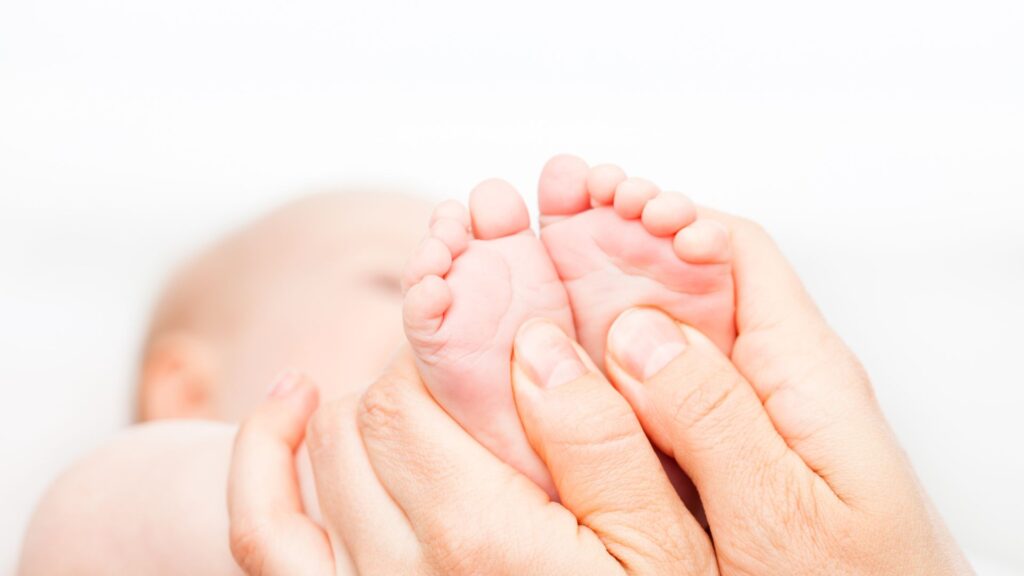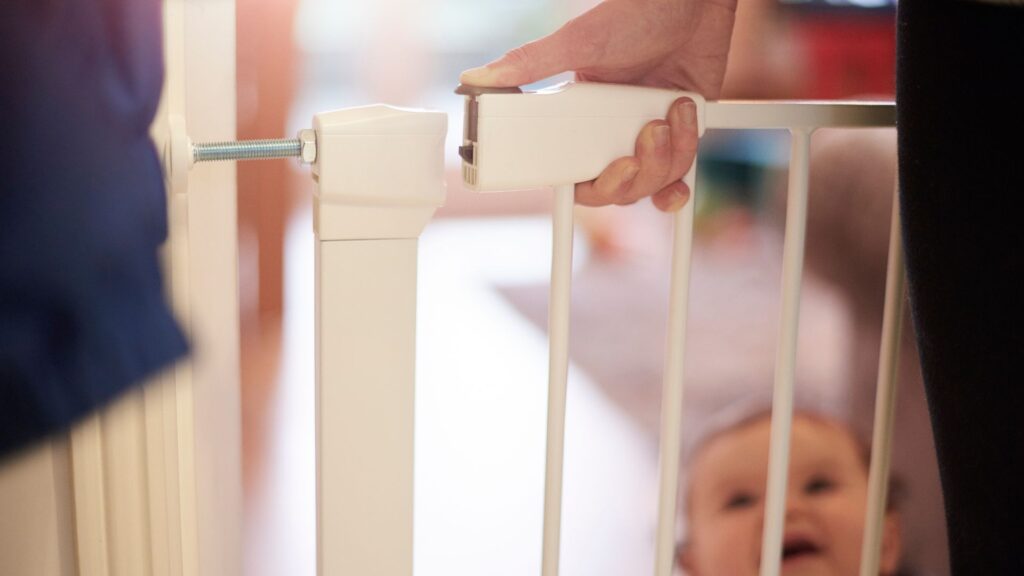Rolling over is a major milestone in your baby’s physical development, and as a parent, you play a pivotal role in learning how to help baby roll over. Throughout this blog post, I’ll guide you on how to provide ample tummy time, support your baby’s efforts, incorporate additional exercises, and ensure their safety as they learn to roll over. Get ready to celebrate each little victory on this exciting journey!
Short Summary
- Help your baby roll over by providing tummy time, guiding them & incorporating exercises.
- Use toys, mirrors & praise to encourage head lifting during tummy time.
- Baby proof the area and use wearable blankets for safe sleep when transitioning out of swaddling.
Understanding the Rolling Over Milestone

Rolling over, or as some may call it, the “babies roll” milestone, is an essential developmental step for babies, usually occurring between 3 to 7 months of age. This seemingly simple movement, known as “baby rolling,” plays a crucial role in your baby’s physical development, helping them build muscle strength and coordination. As your baby starts rolling over, they’ll be well on their way to achieving more complex movements like crawling and sitting up.
But how can you tell when your little one is ready to start rolling? Look out for noticeable signs such as rocking back and forth, increased leg kicking, and reaching for toys during tummy time. These actions indicate that your baby is gearing up to roll over, and it’s the perfect time to encourage their efforts and celebrate their progress.
Building Strength Through Tummy Time

Tummy time is the foundation for helping your baby roll over. During these sessions, your baby will be on their belly, using their arms to lift their head and shoulders off the floor. This essential activity strengthens their head, neck, and upper body muscles, preparing them for rolling over.
In the following sections, we’ll dive deeper into optimizing tummy time for your baby’s benefit, from gradually increasing the duration to engaging them with toys and mirrors.
Gradually Increase Tummy Time Duration
It’s important to start with short tummy time sessions and gradually increase the duration as your baby becomes more comfortable and stronger. In the beginning, aim for just a few minutes at a time and slowly work your way up as your baby builds endurance and muscle strength. Remember that consistency is key – try to incorporate tummy time into your baby’s daily routine to help them progress steadily.
Making tummy time enjoyable for your baby is essential for their engagement and success. Try incorporating fun activities such as singing songs, talking to your baby, or playing with toys to keep them entertained. As your baby becomes more comfortable and confident during tummy time, they’ll be better prepared to tackle rolling over and other developmental milestones.
Use Toys and Mirrors for Engagement

Toys and mirrors can be incredibly helpful in engaging your baby during tummy time. By strategically placing them around your baby, you can encourage them to turn their head and reach out, which helps develop the muscles necessary for rolling over. Opt for toys with bold patterns, bright colors, and interesting textures to captivate your baby’s attention and motivate them to explore their surroundings.
In addition to using toys, consider placing a baby-safe mirror in front of your little one during tummy time. Babies are naturally fascinated by their reflection, and a mirror can encourage them to lift their head and move it from side to side. This exercise promotes head control and neck strength, both of which are vital for rolling over.
Encourage Baby’s Head Lifting
Head lifting is a crucial skill for your baby to develop during tummy time, as it helps build neck and upper body strength needed for rolling over. Encourage your baby to lift their head by getting down on their level, making eye contact, and speaking to them in an engaging manner. You can also use toys or mirrors to catch their attention and inspire them to lift their head higher.
Another sign that your baby is preparing to roll over is when they start pushing up on their arms while on their tummy. This action helps them develop the strength and coordination necessary for rolling over. Be sure to celebrate their progress and praise their efforts, as positive reinforcement can motivate your baby to continue working on this important milestone.
Supporting Baby’s Rolling Efforts

As your baby starts to show signs of rolling over, supporting and guiding their efforts is essential. In the next sections, we’ll explore how to gently guide their hips and legs, use toys as motivation, and celebrate their progress and milestones. By providing this support, you’ll help your baby build the confidence and skills necessary to roll over independently.
Guide Baby’s Hips and Legs

Gently guiding your baby’s hips and legs during tummy time can help them understand the movements needed for rolling over. For example, when your baby is on their back, keep one leg straight and prop up the opposite hip, helping it roll over the straight leg. Make sure to practice this on both sides to promote balanced muscle development.
As your baby becomes more comfortable with rolling, you can gradually ease off your support to encourage their independence. Try stopping when they’re on their side and see if they can complete the roll on their own. If not, help out their hip and gently tip them forward, allowing gravity to assist in the process.
Over time, give less and less support as your baby becomes stronger and more confident in their rolling abilities.
Use Toys as Motivation
Toys can be a powerful motivator for your baby to roll over during tummy time. By placing their favorite toy just out of reach, you can encourage them to make an effort to roll over and grab it. This not only helps your baby practice rolling but also keeps them engaged in the activity and eager to reach their goal.
Aside from toys, you can also use other objects or even yourself to motivate your baby to roll over. Position yourself or an interesting object just beyond their reach and call their attention to it. As they become more curious and determined to reach the object, they’ll be more likely to attempt rolling over to get closer to it.
Celebrate Progress and Milestones
Praising and celebrating your baby’s progress and milestones is crucial in encouraging their continued efforts in learning to roll over. Each small victory, such as lifting their head higher or reaching for a toy, should be acknowledged and praised. This positive reinforcement not only motivates your baby to keep trying but also helps build their self-confidence as they develop new skills.
When your baby finally rolls over completely, be sure to give them a big round of applause and lots of love! This milestone is a major accomplishment in their physical development, and celebrating it with enthusiasm reinforces the importance of their achievement.
Remember that your support and encouragement play a significant role in helping you encourage baby to reach their milestones and continue to grow and develop as most babies start exploring their surroundings through baby play.
Additional Exercises for Muscle Development

In addition to tummy time, there are other exercises you can incorporate into your baby’s routine to develop their muscles further and encourage rolling over. Bicycling legs and baby sit-ups are two such exercises that can help strengthen your baby’s core, leg, and abdominal muscles.
Let’s explore these exercises in more detail and learn how to perform them effectively.
Bicycling Legs
Bicycling your baby’s legs is a simple yet effective exercise that can help strengthen their core and leg muscles, making it easier for them to roll over. To perform this exercise:
- Lay your baby on their back.
- Gently hold their legs.
- Move them up and down in a bicycling motion, ensuring that you’re applying gentle pressure and not overextending their joints.
Incorporate bicycling legs into your baby’s daily routine, and you’ll notice a gradual improvement in their strength and coordination. As their muscles develop, they’ll find it easier to roll over and achieve other developmental milestones. Just remember always to perform this exercise with care and be mindful of your baby’s comfort and safety.
Baby Sit-ups
Baby sit-ups are another great exercise to help develop your baby’s abdominal strength, which is essential for rolling over and other gross motor skills. To perform baby sit-ups, lay your little one on their back with their arms and legs outstretched. Gently lift their arms and legs up and down in a sit-up motion, taking care to support their neck and back.
As with any exercise, it’s important to prioritize your baby’s safety while performing baby sit-ups. Always hold your baby’s neck and back securely, and never leave them unattended during the exercise. By incorporating baby sit-ups into their routine, you’ll help your baby develop the strength and coordination needed for:
- Rolling over
- Sitting up
- Crawling
- Standing
- Walking
and other essential milestones.
Rolling Over Safety Tips

Ensuring your baby’s safety during rolling-over practice is paramount. In the following sections, we’ll discuss how to baby-proof the area, provide constant supervision, and transition out of swaddling when your baby begins to show signs of rolling over.
By implementing these safety measures, you can create a secure environment for your baby to learn and grow.
Baby-Proof the Area
Before your baby begins practicing rolling over, it’s essential to:
- Remove any potential hazards and secure furniture in the area
- Use corner guards and padding on furniture edges
- Clear away any clutter
- Ensure that any unstable furniture is secured with furniture straps and wall anchors.
Additionally, make sure to install essential baby equipment like stove-knob covers, childproof cabinet, and drawer locks, and cover any electrical outlets within your baby’s reach. By taking these precautions, you can create a safe environment for your baby to practice rolling over and explore their surroundings without the risk of accidents.
Supervision is Key
Always supervise your baby during tummy time and rolling over the practice to ensure their safety. Leaving a baby unsupervised during these activities can lead to frustration or distress, so it’s important to stay close by and be prepared to step in if needed. It’s also crucial to keep an eye out for any small objects they might try to put in their mouth, as these can pose a choking hazard.
In addition to close supervision during practice, be sure to monitor your baby while they sleep. If they roll over while sleeping, gently return them to their back to maintain the safest sleep position. Remember that your vigilance plays a crucial role in your baby’s safety as they learn to roll over and explore their world.
Transitioning Out of Swaddling
Once your baby begins to show signs of rolling over, it’s important to transition them out of swaddling. Continuing to swaddle a baby who can roll over increases the risk of sudden infant death syndrome (SIDS) and restricts their ability to move freely. To make this transition, consider using wearable blankets or sleep sacks that allow for free movement while still providing a sense of security.
When transitioning out of swaddling, it’s essential to ensure that your baby is still placed on their back for sleep. This position is considered the safest for sleep and helps reduce the risk of SIDS. By being mindful of your baby’s sleep position and transitioning out of swaddling at the appropriate time, you can keep them safe and support their continued development.
Final Thoughts
Helping your baby learn to roll over is an important part of their physical development. By following these steps, you can encourage your baby to reach this crucial milestone.
- Provide ample tummy time.
- Support their efforts by gently guiding and encouraging them.
- Incorporate additional exercises like bicycling legs and baby sit-ups.
- Ensure their safety by creating a safe and comfortable environment.
By following these tips, you can help your baby learn to roll over, support their physical development, and master those adorable baby rolls.
Remember that your guidance, patience, and enthusiasm play a significant role in your baby’s journey toward rolling over and beyond. Here are a few tips to help you along the way as you lay baby down for practice.
In conclusion, helping your baby reach the rolling over milestone is an essential aspect of their physical development. By following the steps outlined in this blog post, you can support your baby’s efforts, strengthen their muscles, and ensure their safety as they learn to roll over. Embrace this exciting journey with your little one and take pride in each accomplishment along the way.
Frequently Asked Questions
How can I help my baby learn to roll over?
You can help your baby learn to roll over by making sure you’re engaging in regular tummy time, providing toys for them to reach for while they are on their tummy, encouraging them to turn their head towards a sound or toy, and even gently initiating the roll yourself.
By engaging in regular tummy time, you can help your baby become more comfortable with being on their tummy. This will help them build the strength and coordination needed to roll over. Providing toys for them to reach for while they are on their tummy can also help them practice the movements needed to roll over.
Encourage them by encouraging them.
At what age should a baby be able to roll over?
Your baby will typically start rolling over around 4 months old, although it can be anywhere between 3 and 6 months. Before rolling, they will practice rocking side to side.
At around 6 months most babies should be able to roll over in both directions.
Why is my baby struggling to roll over?
It looks like your baby is having difficulty with their gross motor skills, which can make it difficult to roll over. Lack of strength in their arms and core as well as lack of balance, can cause them to not be able to move their body weight effectively.
Therefore, they have difficulty rolling over.
What are the first signs of rolling over?
The first signs of rolling over usually involve baby lifting their head and chest off the ground, pushing up with their arms, and turning their head from side to side.
As they grow stronger, they will be able to roll over completely!
When does baby roll over?
Most babies start rolling from their stomach to back around 4-5 months old and are able to roll both ways by 6-7 months. Before the big roll, your baby might rock side-to-side in preparation.
By 6 months, they should be able to roll over in both directions.
Hi – I’m Alina and I am a soon to be mom going through the journey of becoming a parent. I am a writer at heart and I love sharing about pregnancy tips and other busy mom hacks.
